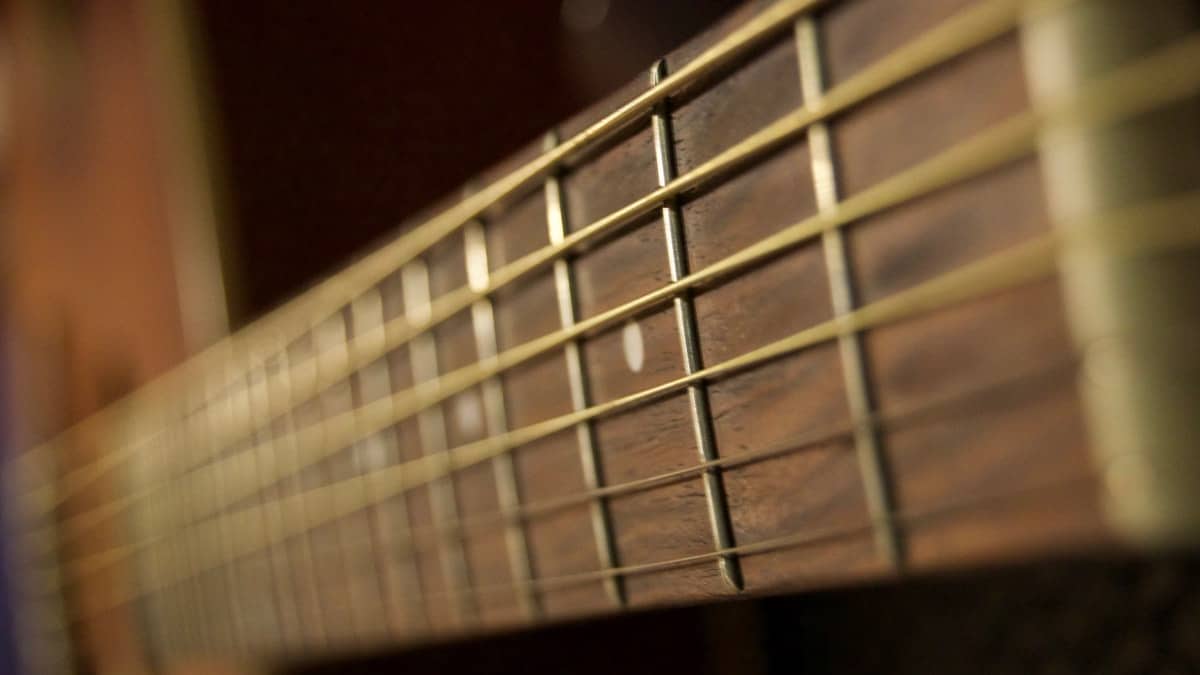Jazz Guitar Lessons
Leon Rodriquez Helps With Some ‘Fretboard Vision’ – Part 1

In this JGT lesson, jazz guitarist Leon Rodriguez provides some ‘Fretboard Vision’ and explains natural half steps.
When a keyboard player looks at his instrument, he sees the organized array of sounds to be selected for composition, improvisation, or any analysis for one simple reason; the two reoccurring places where there is an absence of black keys. That visual is a quick orientation of what would otherwise be visually indiscernible. Those are the natural half steps. B to C and E to F. As guitarists, we have to work a little harder for the benefit of that same orientation. Like any language, we begin with our alphabet, the chromatic scale. Note the natural half steps.

We mark C in red on both the keyboard and the fretboard. The C is always visually identifiable and therefore predictable. We should have that too.
Our instrument is built on 4ths!
Let’s look at our strings in string pairs. The E to F natural half step is always on the string of higher pitch than the B to C natural half step. So the 1st string B to C half step on the frets 7,8 don’t have an E to F, 4th interval pairing. However, the open strings to 1st fret fit the criteria perfectly. The 1st to 2nd strings are a perfect 4th apart.

As usual, the major 3rd interval between the 2nd and 3rd string offset the shape of our next string pair by 1 fret.

Because the interval between the 2nd and 3rd string is a major 3rd rather than a perfect 4th, The natural half steps are shifted by one fret. E and F on the 2nd string are on the 5th and 6th frets and B and C are on the 4th and 5th fret on the 3rd string.
The 3rd and 4th strings are a perfect 4th apart so naturally, our natural half steps line up perfectly. This time on the 9th and 10th frets. That’s dependable and forever (in standard tuning, that is).

Again the 4th and 5th strings, at perfect 4th intervals allow us to safely predict, reference and navigate our natural half steps like a north star, this time at the 2nd and 3rd frets.

5th and 6th strings? … at the 7th and 8th frets. ‘nuff said.

This is what we look for in each string pair! Remember, the B to C on the lower pitch string, E to F on the adjacent higher pitch string. We work a bit harder but it is usually accessible to us. Notice the F to B tritone line in red on each ‘block’? Another helpful layer.

Add this useful layer of comfort to your overall fretboard vision. For a more complete Geometry of the fretboard see Volume II- Geometry of my Fretboard Theory for Guitarists series of books.

To be continued…Books and On-Line Private Lessons available at www.LeonRodriguezGuitar.com/shop
Volume VIII Video & Book: Leon lectures and demonstrates the relationship between Diminished 7th chord to Dominant 7th chord demonstrating how to arrive at all 12 chromatic Dominant 7th’s chord in any position to give you 144 Dominant 7th’s chords across the 12 positions.
Understanding the symmetry within music theory and relaying it to the 6 X 12 matrix that is the fretboard, will give you a totally controllable vision of the fretboard. Notice the notes that touch the corners of these two “diamonds”. Four equidistant points a minor third apart is where it begins. Don’t miss this adventure into fretboard control. It’s a separate vision!
-
Jazz Guitar Lessons2 weeks ago
New JGT Guitar Lesson: Analyzing “Without A Song”
-
Jazz Guitar Lessons4 weeks ago
New JGT Guitar Lesson: Considering “Falling Grace”
-
Artist Features1 week ago
New Kurt Rosenwinkel JGT Video Podcast – July 2024
-
Artist Features2 weeks ago
JGT Talks To Seattle’s Michael Eskenazi




















